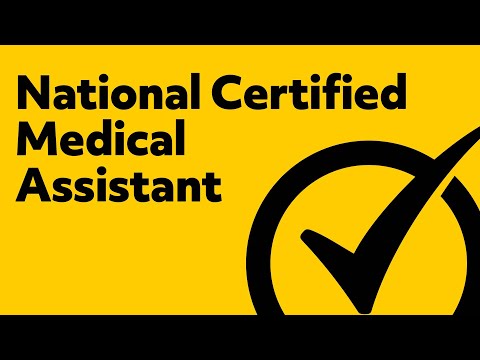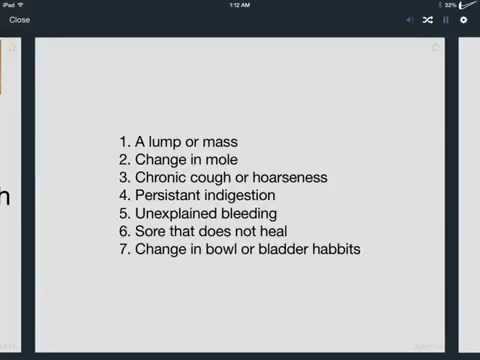New Technology for Medical Assistants
Contents
- EHRs and medical assistants
- The use of scribes in medical offices
- The role of medical assistants in population health
- The future of medical assisting
- The use of technology in medical assisting
- The impact of technology on medical assisting
- The use of mobile devices in medical assisting
- The use of social media in medical assisting
- The use of telemedicine in medical assisting
- The use of artificial intelligence in medical assisting
Discover the new technology Medical assistants are using to make patient care more efficient and effective.
Checkout this video:
EHRs and medical assistants
The use of electronic health records (EHRs) is becoming more common in medical practices, and Medical Assistants need to be familiar with how to use them. EHRs can help streamline the workflow in a medical office, and make it easier for medical assistants to keep track of patient records and information.
There are many different EHR systems on the market, and each one has its own features and capabilities.Medical assistants need to be able to know how to use the basic features of an EHR system, such as creating and accessing patient records, scheduling appointments, and ordering laboratory tests. In addition, they should be familiar with how to use more advanced features, such as e-prescribing and sending secure messages to other members of the healthcare team.
As EHRs become more widespread, medical assistants need to be prepared to use them in their daily work.
The use of scribes in medical offices
The use of scribes in medical offices is becoming more common as the role of the medical assistant becomes more complex. Scribes are trained professionals who can help with documentation, charting, and other tasks that take up the medical assistant’s time.
While scribes are not new to the medical field, their use in primary care and other outpatient settings is growing as electronic health records become more commonplace. Medical assistants who work with scribes can focus on patient care and leave the documentation to someone else.
There are many benefits to having a scribe in the medical office, but there are also some drawbacks. Scribes can be expensive, and they require training and supervision. In some cases, they may also slow down the provider-patient interaction.
If you are considering adding a scribe to your medical office, be sure to do your research and weigh the pros and cons carefully.
The role of medical assistants in population health
Medical assistants play an important role in population health. They are the link between providers and patients, and they have a unique ability to impact the health of a community.
Medical assistants are often the first point of contact for patients. They are responsible for greeting patients, taking medical histories, and collecting vital signs. They also scheduling appointments, handling billing and insurance issues, and ordering laboratory tests.
In addition to their administrative duties, medical assistants also provide clinical support to providers. They may assist with exams, take patient calls, and give injections. They may also help to educate patients about their health conditions and provide instructions on how to take their medications.
Medical assistants play a critical role in population health because they are uniquely positioned to impact the health of a community. By providing administrative support and clinical care, they can help to improve access to care and increase the quality of care that patients receive.
The future of medical assisting
The medical assistant profession is constantly evolving. As new technology is developed and old technology becomes outdated, medical assistants must adapt in order to keep up with the times.
One of the biggest changes that medical assistants will see in the near future is the use of electronic health records (EHRs). EHRs are digital versions of a patient’s medical history that can be accessed by any healthcare provider who has been given permission by the patient.
Medical assistants will need to be trained in how to use EHRs, as they will be responsible for inputting data into the system. They will also need to know how to retrieve data from the system when it is needed.
Another change that medical assistants will see in the future is an increased focus on preventative care. With the increasing costs of healthcare, insurance companies and employers are beginning to emphasize preventive care measures in an effort to reduce the overall cost of healthcare.
Medical assistants will need to be familiar with various preventive care measures, such as immunizations, screenings, and counseling patients on healthy lifestyle choices. They will also need to know how to educate patients about these measures so that they can make informed decisions about their health.
The use of technology in medical assisting
Technology is changing the field of medical assisting. Many medical assistants are now using computers and other forms of technology to perform their duties. This has led to an increase in the number of medical assistant jobs that require knowledge of computers and other forms of technology.
The use of technology in medical assisting is also changing the way medical assistants work. Medical assistants are now able to work from home, using the Internet and other forms of technology to perform their duties. This has led to an increase in the number of job opportunities for medical assistants.
The impact of technology on medical assisting
The medical field is constantly evolving, and with that comes new technologies that medical assistants must be familiar with. While some may see this as a daunting task, technology can actually make the job of a medical assistant easier and more efficient.
Some of the most common technologies used by medical assistants include electronic health records (EHRs), practice management software, and billing and coding software. Medical assistants must be able to understand and use these technologies in order to perform their job duties effectively.
EHRs are one of the most important technologies for medical assistants to be familiar with. EHRs are used to store patient health information electronically. This information can then be accessed by other healthcare providers, which makes it easier for patients to get the care they need.
Practice management software is another important technology for medical assistants to be familiar with. This type of software is used to help manage a medical practice, including appointment scheduling, patient records, and billing. Practice management software can make it easier for medical assistants to do their job and can help practices run more smoothly.
Billing and coding software is another technology that medical assistants need to be familiar with. This type of software is used to code patient diagnoses and procedures so that insurers will reimburse the practice for the services rendered. Billing and coding software can be complex, but it is essential for medical assistants to understand how it works in order to correctly code patient visits.
The use of mobile devices in medical assisting
Medical assistants are increasingly using mobile devices to perform their duties. This new technology allows medical assistants to be more efficient and effective in their work. Mobile devices can be used to access patient medical records prescriptions, and lab results. They can also be used to schedule appointments and keep track of patients’ health information.
This new technology is changing the way medical assistants work, and it is important for those working in this field to be aware of these changes. Mobile devices can help medical assistants save time and improve patient care.
The use of social media in medical assisting is a controversial topic. Some proponents believe that social media can be used to support and connect with patients. Others believe that social media is a distraction that can lead to errors.
There are no easy answers when it comes to the use of social media in medical assisting. However, there are some guidelines that can help you make the decision about whether or not to use social media in your work.
If you do choose to use social media in your work as a medical assistant, there are some important things to keep in mind. First, you should only use reputable, reliable sources of information. Second, you should always maintain a professional tone and respectful attitude when interacting with patients online. Finally, you should be aware of the potential risks involved in sharing confidential information about patients on social media.
The use of telemedicine in medical assisting
Telemedicine is the use of telecommunications and information technologies to provide medical care from a distance. It has been used in a variety of settings, including primary care, mental health and home health.
Medical assistants can use telemedicine to provide patient care, education, and support. For example, they can use it to:
– Consult with a physician or specialist
– Provide patient education
– Monitor vital signs
– Offer support to patients and families
The use of artificial intelligence in medical assisting
Artificial intelligence (AI) is a branch of computer science that deals with the creation of intelligent agents, or software that can reason and act autonomously. In recent years, AI has made significant advances, and is beginning to be used in a variety of fields, including medicine.
Medical assistants are becoming increasingly reliant on AI-powered tools to help them with their work. These tools can range from simple chatbots that answer questions about medical procedures, to more complex systems that help diagnose patients.
AI is an essential tool for medical assistants, as it can help them to free up time that would otherwise be spent on tasks that can be automated. Additionally, AI can help to improve the accuracy of diagnosis and treatment plans. In the future, AI is likely to play an even bigger role in medical assisting, as it continues to evolve and become more sophisticated.







